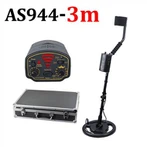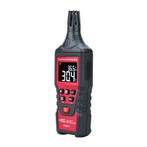Application of full-phase microscope in PC board production
The role of incoming raw material inspection As the copper-clad laminate required for the production of multi-layer PCB boards, its quality will directly affect the production of multi-layer PCB boards. The following important information can be obtained from the sections taken by a metallographic microscope:
1.1 Thickness of copper foil. Check whether the thickness of copper foil meets the production requirements of multi-layer printed boards.
1.2 The thickness of the insulating dielectric layer and the arrangement of the prepreg sheets.
1.3 In the insulating medium, the warp and weft arrangement of glass fibers and the resin content.
1.4 Metallographic microscope laminate defect information Laminate defects mainly include the following:
(1) Pinhole refers to a small hole that completely penetrates a layer of metal. For the production of multi-layer printed boards with higher wiring density, this kind of defect is often not allowed to occur.
(2) Pitting and dents Pitting refers to small holes that have not completely penetrated the metal foil: dents refer to the local dot-like protrusions of the pressed steel plate used during the pressing process, causing the appearance of the copper foil surface after pressing. Ease of sinking. The size of the hole and the depth of the subsidence can be measured through metallographic sections to determine whether the existence of the defect is allowed.
(3) Scratches Scratches refer to the thin and shallow grooves drawn on the surface of copper foil by sharp objects. Measure the scratch width and depth through metallographic microscope sections to determine whether the existence of the defect is allowed.
(4) Wrinkles Wrinkles refer to the creases or wrinkles of the copper foil on the surface of the pressure plate. The existence of this defect can be seen through metallographic sectioning and is not allowed.
(5) Lamination voids, white spots and blisters Lamination voids refer to areas where resin and adhesive should be present inside the laminate, but are incompletely filled and missing; white spots occur inside the base material, where the fabric interweaves. The phenomenon of separation of glass fiber and resin is manifested as scattered white spots or "cross patterns" under the surface of the substrate; blistering refers to the local expansion between the layers of the substrate or between the substrate and the conductive copper foil, causing local separation. The phenomenon. The existence of such defects will be determined depending on the specific circumstances.






